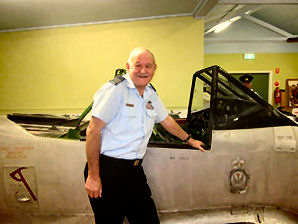|
|
|
|
Radschool Association Magazine - Vol 45 Page 7 |
|
|
Privacy Policy | Editorial Policy | Profit Policy | Join the Association | List of Members | Contact us | Index | Links |
|
|
My Story! |
|
|
Back Go to page: 1 2 3 4 5 6 7 8 9 10 11 12 13 14 15 16 17 18 19 20 Forward |
|
|
|
|
|
WGCDR. John Griffiths, MBE (Retired).
Not
that he would ever admit it in mixed company, but John was born and bred
in Melbourne. A true Baby Boomer, he first saw the light in 1946 after his Dad
returned from the War in Borneo but, as he was no great scholar, a Radio
Apprenticeship was way out of his reach. However, things started to
click, not in the class room, but on the playing fields. He vividly remembers one of his school
mates telling him about the Air Training Corps and how great it was
especially having the chance to fly in a RAAF Dakota on camp. Sure
enough, he headed off the next Friday night to the West Melbourne Drill
Hall where plenty of old Second World War instructors were teaching all
those beaut subjects like Map Reading, Drill, Aircraft Recognition,
Morse Code, more Drill and stripping the No 1 Mk 3, Short Magazine .303”
Lee-Enfield Service Rifle. The Reserve was alive and well with the staff
and blow-ins making full use of the bar to the side of the drill hall.
The smell of stale
Early screening tester for pilots (right).
Four
great years in the ATC saw John getting a taste for the uniform life.
The first General Service Training Camp was held at RAAF Base Ballarat
where he learned all those service traditions of Panics, scrubbing,
polishing and Emu parades. Unfortunately there was none of the
aforementioned RAAF Dakota flying on that GST camp. Back in Melbourne it
was on with schooling and Air Training Corps and later he was promoted
to Corporal and then, while in year 11 there was an opportunity to apply
for the Air Training Corps Flying Scholarship. In hindsight this was
such a great opportunity for a free run over the target. The Aptitude
tests, Medicals and Interviews were virtually the same as that used for
the RAAF Pilot Selection process two years later. What a great
opportunity to learn to fly in a quasi
RAAF
Base Laverton was the home for the Victorian Squadron candidates, many
would go on to great service careers including Air Commodore, retired,
Dave Leach. Four DHC-1 Chipmunks were beaten into submission by a
dedicated team of Argentine Ants, controlled by an equally eager bunch
of RAAF and Royal Victorian Aero Club Instructors. The lessons and Mass
Briefings were not all that different to what the Australian Air Force
Cadets (AAFC) are experiencing now at bases throughout Australia, still
supported by the Chief. The Flying Scholarship in the early 60s enabled
the recipient
After the taste of flying, school was rather boring. It was a wee bit too distracting for year 12 studies and John finished up going to night school the next year to pick up Maths and Physics, necessary for pilot selection. He enjoyed the Cadet Under Officer’s course at RAAF East Sale and served his last year in the ATC as a CUO. Unfortunately the ATC was only for 14 to 18 year olds at that time. The kids have so much more to give back now with two more years if they wish. To fill in time while waiting for Pilot course selection John worked as a Costing Clerk for Victorian Railways. This was tactically a great move as it reinforced the need to stay out of a civil office job and find that Air Force Career.
On 7 May 1965 he marched in to RAAF Point Cook with some fresh faced cadets, midshipman, Army Lieutenants and a couple of crusty old troops, some of the greatest friends John has in this world today. Not much to see involving Aviation, but plenty of those service traditions of Panics, scrubbing, polishing and Emu parades. Lessons on Drill, English, PT, Aerodynamics, Navigation, Drill, shooting and more Drill. There were lots of fun times with the upending of rooms, room relocations and doubling around the Base. WOFF Ashton always had it in for that Course known as 58 Pilot’s Course. But he didn’t break their spirit. They were shipped off to Pearce early in 1966 to see if they could break some Vampires. They must have done a pretty good job of it as Paul Rigby had a great cartoon, Per Bicycle Ad Astra. That was the time when the serviceability of the Geriatric Jet was problematic. When the young lad was lucky enough to get a solo it was often disturbing to do a slow roll only to hear the fuselage catch up with the wings some time later as there was a thunk under the floor.
The aircraft was still a great machine. Fitted with Long Range tanks it was possible to do a Navex to Albany and back, not bad for a Vampire which without additional tanks has a "that's it" range at economical cruise of just under 2000 klms and when flat out will reach a dizzy 850 klm/hour. John's Wings Test Vampire, now resting at Albion Park.
They learned Altitude and Compressibility runs and Limited Panel Aural Null homing and Letdowns, something that was tried on the Caribou in the late 1990’s. If you ever have the time, go and sit in one of the dual Vampires around, sit someone in the Right Hand Seat who is a big 7’ angry gorilla and try reaching over to tune the ADF. The cockpit was rather comfy and with long legs, an ejection would have been rather dramatic. Hence, good practice Flameout descents.
Eventually his course graduated and then it was into suspense mode while waiting for that important posting. Vietnam was rapidly building up and the RAAF urgently needed Iroquois and Caribou pilots and John claims that is the only reason he scraped through his final and was given his wings. He was chosen to fly the old Caribou but first off it was down to the Gold Coast and the Army’s torture camp at Canungra for survival training. His mate at the time was big Jack Rydstrom, a damn nice bloke who was tragically lost in an aircraft accident many years later.
After a flight from Port Moresby on Thursday 1st July 1995, Jack’s aircraft (a Civvy Caribou, above) had to divert to Kiunga due to bad weather at it's destination, Tabubil. During climbout from Tabubil the No 2 engine failed, then while on approach to Kiunga the other engine also failed. The Caribou crashed into trees, short of the runway.
While in transit to Canungra, John and his mates were talking about and looking forward to days off where they imagined themselves down on the beach surfing, chasing lovely ladies, having the odd cold one with a nice juicy steak and just being Mr Tourist – were they in for a shock. Canungra was the ADF’s survival training camp, they spent their first week learning the theory then the next was putting all that theory to practice, they were dropped off in the scrub and told to live off the land and to evade capture as there would be people out there trying to capture them. Not a lot of time to spend in the boardies, on the beach
After
their ‘holiday’ on the Coast, it was back south again, this time to
Richmond and 38 Squadron, the home of the brand new Caribou. The RAAF
accepted the first Caribou in February 1964 and three were ferried to
Richmond, arriving on the 22nd April, 1964. John
Those brand new shiny chocolate brown Caribous were a great workhorse and a great way to learn how to operate in Australia and Papua New Guinea. In hindsight, Vietnam was such a letdown after learning to operate in the High and Hot Papua New Guinea. 38SQN DetA (left) was a great way for a young team to get to know each other, knowing their limitations both at work and at play. House Champion being right over the road from the Ela Beach RSL was very handy too.
Some of the motor vehicle accidents in Port Moresby highlighted all too well the limitations, but what happens in PNG stays in PNG. After a couple of Detachments up north, a time at Rockhampton playing war games with the Army, (though staying in the Criterion Hotel wasn't bad) the odd flood relief fodder drop, overnighters at Puckapunyul, Whyalla and Leigh Creek, most crews learned how to go away together, get the job done and bring the aircraft back in one piece with, in a lot of cases, the Imprest balanced. Always a challenge for a young Boggie. Funny thing about the old Caribou, the harder you worked it the more it seemed to like it.
Vietnam was always the cherry on top. All the young 38 Sqn pilots would regularly check out the board to see who they needed to nobble so they could get a run up North. Conversion course members who had previous experience on other aircraft jumped up the list but John and a few of his mates were off in May 1968, just after TET 68. Arriving into Tan Son Nhut Air Base (Saigon) in the Qantas 707 they were decanted into a USAF C130 and Combat Loaded to Vung Tau. Since then, the tarmac at Saigon hasn’t changed that much, the revetments are still there but the plethora of gunships have long gone. So too the stack of empty aluminium caskets.
|
|
|
|
|
|
|
|
|
John returned a couple of years ago with Ian ‘Jake’ Jacobsen, reliving the old haunts from Danang to the Delta with some new treats thrown in with Hanoi and Sapa. He was back again again in 2013, 45 years ago to the day that he first arrived at Vung Tau.
The
year flying in Vietnam was a great experience for a Boggie pilot, plenty
of flying during
A funny thing happened in Manila – when crews were picking up A4-173 which had been in the shop undergoing a major service, Tommy Thomson was nearly left stranded. A4-173 had earlier been in a major incident in Vietnam and as a result the repairs had left a whole lot of butt joints in the nose. Even though it seemed to fly ok, the Manila repairers had difficulty matching the airframe to the plans and this required a longer stay than the Imprest allowed. The crew were on hard tac rations and there was no sign of the aircraft captain (Tommy) when the Diplomatic Clearance Departure time arrived and was about to pass. Then, in the nick of time, around came the police car with the aircraft Captain and his True Love, just in time to say Clear Right.
The Vietnam era did have its lighter moments. John recalls a couple, he says while watching an old Doris Day movie one night, the Base alarm was sounded. Everybody bolted from the safety of the bar to the bunker, except Doc Tebbitt, who decided to stay put and guard the Bar against possible incoming insurgents. He can remember one morning, while still a rather new, wet behind the ears Boggie and flying co-pilot down in the Delta region with the CO, they reached their planned destination only to see a boat going along the strip. John, to the CO’s dismay, called up on HF telling Hilda, the MACV, operator that Wallaby 02 would not be landing. Bad move!! John had his back-side kicked from the Delta all the way back to Vung Tau, he was told quite forcefully that he didn’t make any decisions, the CO being the CO would do that and any decision whether they landed or not was his – boat or no boat.
While
in Vung Tau a lot of the boggies did their promotion exams and this gave
them a couple of days off flying. Jack Rydstrom and John completed their
assigned papers and as it was warm, had a refreshing beer or two before
retiring. However, there was an urgent
Then it was time to catch the freedom bird, and it was here that they discovered it wasn’t the drinking that caused a hangover, it was the sleep. John and a couple of mates stayed in the general vicinity of the bar all night and next morning were as fit as fiddles and reckoned they could have flown the Caribou back to Saigon – no worries. The blokes who gave up during the night and who had hit the sack looked like they had been in a rocket attack.
Back in the late 1960’s, communications between Vung Tau and home were not the click and talk facility they are today, the normal method being snail mail postage. While he was away, John’s fiancé had been organising a wedding to be held on his return but as expected, the RAAF had an earlier requirement, they wanted him to head straight to Richmond for a conversion course onto the E model Hercs at 37SQN, which had been brought forward a week. John gets out the old pen and paper and hurries off a letter to the father of the bride and to his fiancé explaining that yes she really was marrying the Air Force and this is what happens sometimes. The letter left Vung Tau then went via the great circle route, via Honolulu and Washington and finally reached home. You can imagine the language; thank goodness the groom to be was miles away from telephone contact.
|
|
|
Foreign aid might be defined as a transfer of money from poor people in rich countries to rich people in poor countries.
|
|
|
37SQN was a different operation. All pilots believed that they were cut adrift from Caribou operations rather than being posting back to 38 Squadron as they had been seen to enjoy themselves too much flying the old girl. C130 operations in 37SQN were virtually all long range transport with the majority of flying heading back to Vietnam and Butterworth. Medevacs made for some long nights with about 14 hours flying from Butterworth back to Richmond. The condition of some of the troops coming back amazed all the aircrews. Troops missing limbs were elated to be going home. Many of their mates were going home on Cargo flights.
|
|
|
|
|
|
|
|
|
The 10th Anniversary dedication brought home the differences between Air Force members and the Army National Service Conscripts. John went with his neighbour to Canberra and heard that the Army Nashos were in the field one day, back to Vung Tau for a change of uniform and flown back to Australia, farewell, amen. No letting down to get back to normal life. The Air Force members came back to a Unit, back to normal Squadron life, back to OC’s Parades and back to normal. OK, there were a few nasties like being labelled baby killers by the ABC but generally, the Air Force looked after its own.
Thank goodness all that has changed – see Soldier Recovery Centre HERE
Celebrating 12 months of marriage, John and bride Lyn were celebrating at the Kurmond Road House (at Kurrajong, up the hill from Richmond) with one bridesmaid when, lo and behold half 38SQN were there so naturally they invited themselves back for a few beers at the Griffo’s MQ. Unfortunately, so too did the guitar wielding folk singer who was hell bent on finding some good antiwar songs that he could glean from these newly returned Vietnam heroes. He was not very happy so he started to get into the weed until a couple of the Caribou crew picked him up bodily and told him to find another party.
After 37 Sqn, he was posted to CFS for the Instructor’s Course. He had a great time flying the Macchi, boring holes in clouds and then it was back to the Winjeel, the same tough old bird in which he had learned to fly many moons ago. Then it was a case of déjà vu, pack the bags, load the car and back to Point Cook though this time as an instructor not an instructee.
In April 1973, John was involved in his first aircraft accident investigation.
|
|
|
|
|
|
|
|
|
He has always felt more empathy for the poor pilot, he just happens to be the first at the scene of the accident. Winjeel A85-446 was on a training flight in the Ocean Grove area (down near Geelong) and was carrying out a practice forced landing when it went just that little bit too low and left its undercarriage on the far side of a creek. Of course the aircraft cartwheeled and came to a stop all broken but luckily the two drivers were able to relieve themselves of the aircraft relatively unhurt.
After a tour of Winjeel instructing and a short stint as ADC to AOC Support Command AVM Geoff Newstead it was back to 38 Sqn and the old Caribou for Instructing duties. 38SQN was losing two instructors to the Department so Little Chuck Connor and John were posted in. John says that even though he had flown the old girl so often into so many different places and it was as familiar to him as was his own shed, it was amazing just how much you forgot having not flown it for some years. There was a great team at 38, Trev Etheridge, George Bliss, Chuck Connor and Bob Bacchiella all under the guidance of Stan Clarke. A highlight of the tour was the UN changeover to Srinigar, Kashmir. There were also plenty of trips to PNG.
In 1972, 35 Sqn had returned to Australia from Vung Tau, taking up home at Richmond, but in 1976, the Squadron moved to Townsville where it was joined by Iroquois choppers and where with this mixed fleet of aircraft, it undertook army tactical support tasks and civil aid operations, including search and rescue, medical evacuations and flood relief work. John soon followed as Caribou FLTCDR and had a happy and uneventful time except in October 1978 he nearly lost one of his birds. Caribou A4-164 had crashed on take-off at Eliptamin, which is about 300klms SW of Wewak, out in the ‘bush” and initially it was decided to leave it there. But with some great cooperation from the Navy with their HMAS Jervis Bay, the old Australian Trader, 12SQN with their Chinook and AMTDU the aircraft was recovered, sent to Bankstown for repairs and eventually lived a happy life. In 1992 it was finally retired and used as a training aid for AMTDU at Richmond. The tail and wings were removed and are now fitted to A4-173 which is on display at the Queensland Air Museum at Caloundra.
In later years, during his next life as an Aviation Insurance Loss Assessor, John was back at Eliptamin to investigate a fatal MAF aircraft accident. He says getting out of there, late in the afternoon in a non-turbo charged C206 heading for Mt Hagen is another story.
His
next posting was to Southern California for a staff position at the USAF
Inspection and Safety Center (sic). Part of the job was looking after
the health of a fleet of transport
The
Sabreliner
really was a geriatric jet, no autopilot, no antiskid and no weather
radar, but i
After Canberra he received a command posting. It was time to head back to Lae in Papua New Guinea but this time to take over from John Harris as Commanding Officer Air Transport Squadron Papua New Guinea Defence Force. With six DC3s and four Nomads and a great team of RAAF, ARA, RAN and PNGDF instructors and tradesmen, John thoroughly enjoyed the challenges of a command in a foreign country. Hearing charges in tok pidgin was something the CO’s Short Law Course didn’t prepare the new CO for. He says he had some of the finest PNG pilots and engineers thanks to the outstanding expat training team. What did concern him was when an Australian would ask how he gave a PNG national a captaincy. John would always say that he had to be happy to have his wife and kids fly in the aircraft with that pilot in command anywhere in the country. To that end, they often did.
My wife says I don't listen. ... Or at least I think that's what she said?
A highlight, or low light, was the Mutiny. The troops were unhappy. The ground crew, mostly qualified as LAEME, were not getting any specialist pay and the pilots were getting the same as their infantry brothers. So, one Wednesday morning a deputation paid a visit to John’s Office. ‘Sir, we are going on strike’ Well after John heard their story a meeting was set up downstairs in an hour where he advised them that it’s not called a Strike in the Defence Force, it’s called a Mutiny and now that he was aware of the Mutiny he would be the one that would go to the cells if he didn’t do something about it. He said that the buses would be coming to take the men to sport or the cells after the meeting. The men, true to their word, stood by their guns so off they went to the cells. John had to break the news to the Commander, Brigadier General Ken Noga that he didn’t have any aircraft to fly. The next day was the handover parade in Port Moresby so John fronted up in his trusty little Nomad and caught up with all other COs and XOs, Infantry, Engineers, Maritime, etc.
|
|
|
|
|
|
All
were very happy that the Mutiny was quelled in a very amicable manner
and that it wasn’t them facing the music, as they said, ‘Can you imagine
how I would get on, a Sepik locking up my Highlanders, there would be
Pay Back’. After looking at the possibility of helicopters for the
Squadron, the PNG Government decided on buying three IAI Arave aircraft
(right), a fixed wing
aircraft, somewhere between the Caribou and DC3 for
Posting time came around again and John was posted back to the Directorate of Air Force Safety, or so he thought. A C130 was passing through Lae on a PNG trainer and the aircraft captain said, “That was a shame to hear that your posting has been changed” John was rather interested to find out a bit more about this so he called DPO to see if they knew more than he did. ‘Don’t worry”, he was assured, “We will find something for you in Canberra”. That’s great, all the end of year postings have been filled so you get what’s left over. This was the straw that did it for him and he started looking for a career that would give some stability for his children in high school. He was interested to see if he could put to some use his aircraft accident investigation experience.
In
May 1987 he left the RAAF and took on the position of Queensland Manager
for Airclaims, an international company of Aviation Insurance Loss
Assessing, Surveys,
Getting into and out of the accident sites was always a challenge. Very rarely do aeroplanes consider the investigators when they crash, and there were many occasions when he had to get to the site by winching, walking, climbing, wading, boating and/or flying. As time went by, the hills got higher, the bush thicker, rivers faster and deeper and at times he says you would be sitting in your office and waiting for the phone to ring. His car boot was always packed with gear to handle any of the above situations or to attend a board room or the General Manager’s offices.
The Rabaul volcano eruption was an interesting time. ‘Go to Rabaul’. ‘Rabaul is a disaster Zone’ “Don’t worry, you have wantoks, you will get in, somehow”. It was a surreal Rabaul that John was faced with as he rounded up the volcanic ash covered Bell 206, Squirrell, Islander, Cessna 402, Cessna 206. The helicopters survived much better than the fixed wing aircraft and they were shipped back to Lae where they were washed down and sold on behalf of Underwriters.
There
were always surprises. One accident he investigated was a Cessna 402
which went off the end of the runway and ended up upside down in water.
John was there with David Inau, an ex PNGDF pilot and a PNG DCA aircraft
accident investigator. They were sitting and chatting and having a think
about what caused the accident, when a local came up,
A
later accident at Eliptamin brought him back to the Caribou accident
site to see the remains of a Cessna 206 which had ended up against the
hill. The excitement for the day followed. Leaving Eliptamin heading to
Mt Hagen late in the
He came across a Winjeel while visiting a Cadet Unit at Mildura. Naturally he was interested in looking the cockpit to check the serial number. Yes, it was 446, the ghost of Ocean Grove.
In
2004 the time had come to leave aviation insurance game as the company
was downsizing and closing offices. Now it can be very difficult trying
to get back into the workforce at 58 and after writing copious letters,
responding to advertisements where the job was obviously already filled,
he became despondent. The realization was then; it’s easier to get a job
if you have a job. So he spent six months in the retail sector as a
Workplace Health and Safety Officer then a further six months in the
metal trades also as a WHOSO - at least it was a job.
Then he saw that the Australian Air Force Cadets were advertising for the position of Officer Commanding 2 Wing AAFC. Well they were looking for someone younger but they gave John an invitation to come in for an interview. Seven years later he has finally retired from what he considers an amazing time. He was very lucky serving in the Active Reserve until he was 67, visiting virtually all of the AAFC Units throughout Australia and participating in RAAF Safe Audits, HAZCHEM Audits, Flying activities and working with 7,000 dedicated Cadets and staff.
The staff are mainly volunteers who give of their time for a mere honorarium. The youth being turned out are far better than those who went before and John is sure that many of them will finish up as CAF, CDF, Prime Minister or whatever they see as their challenge. Cadets are achieving. They have been going on to succeed in the Defence Force and other worthwhile careers and John is most grateful that he had the opportunity to serve.
John is now the Director of the Air Cadet Alumni and the web address is: http://www.aircadetsalumni.org.au/
He's also heavily involved in Scootabor.
|
|
|
|
|
|
|
|
|
|
|
|

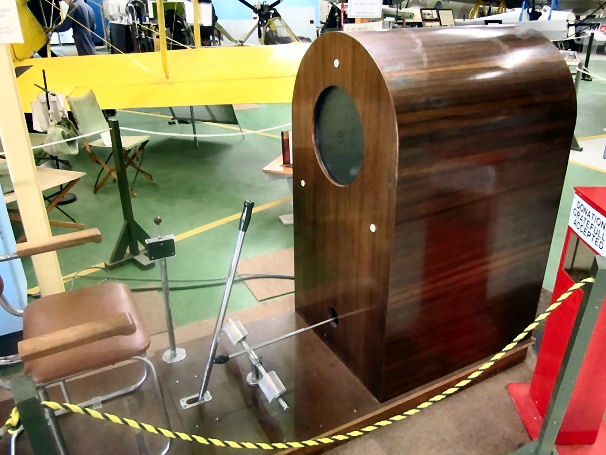
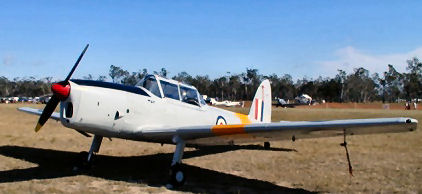 Military environment.
Military environment.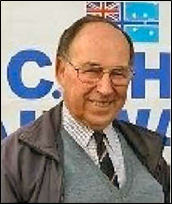
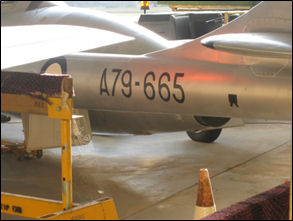
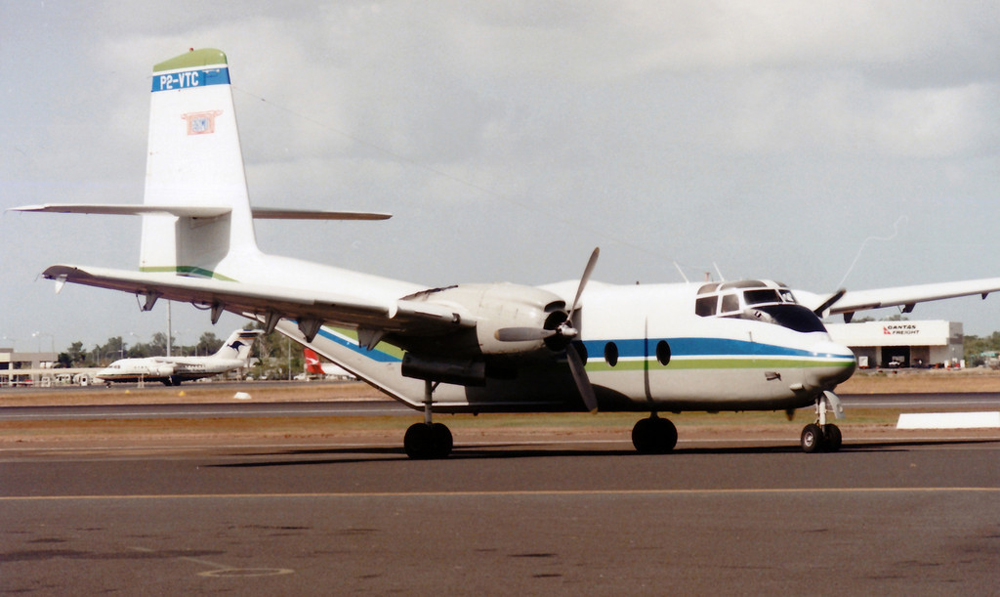
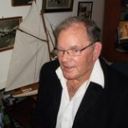 and 4 mates
from his pilot’s course joined Tony Fookes, Rick Lundberg, Jock Cassells,
Stu McAlister and “Tommy” Thomson arrived at Richmond in August 1966 and
were taken under the wing of experienced blokes such as Ron Raymond
(right) and Mike Lancaster and shown how to get the best out of the old
girl.
and 4 mates
from his pilot’s course joined Tony Fookes, Rick Lundberg, Jock Cassells,
Stu McAlister and “Tommy” Thomson arrived at Richmond in August 1966 and
were taken under the wing of experienced blokes such as Ron Raymond
(right) and Mike Lancaster and shown how to get the best out of the old
girl..jpg)
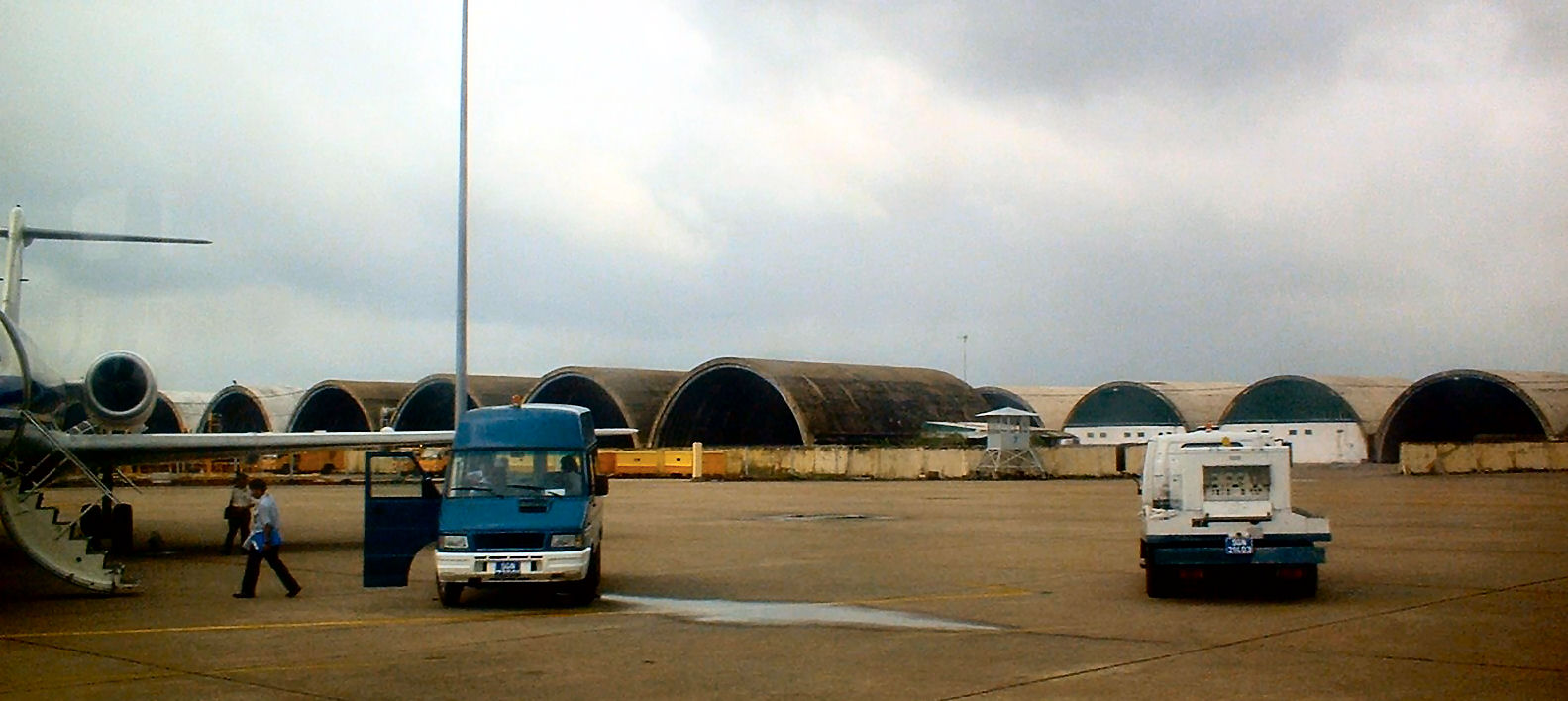
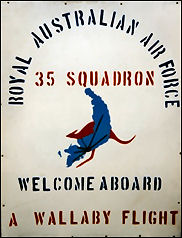 the day, a couple of cheap beers at the end of each day and off flying
again the next. The serviceability of the aircraft was always so much
better than in Australia. They flew 8 hours or so just about every day
of the week and considering the high workload there weren’t too many
incidents. A few artefacts have made it to the Australian War Memorial
including a nosewheel steering wheel with an incoming bullet hole, a
windscreen with a bullet hole directly in line with the Pilot’s head and
there were the odd, outgoing bullet holes. Tommy Thomson and Rocky
McGregor were very lucky lads when a mortar shell exploded very close.
Tommy was heading for a bunker and Rocky realized that the base was
under attack and that it wouldn’t have been a great move to stay and see
the fireworks. Rocky started moving out and the rest of the crew caught
up.
the day, a couple of cheap beers at the end of each day and off flying
again the next. The serviceability of the aircraft was always so much
better than in Australia. They flew 8 hours or so just about every day
of the week and considering the high workload there weren’t too many
incidents. A few artefacts have made it to the Australian War Memorial
including a nosewheel steering wheel with an incoming bullet hole, a
windscreen with a bullet hole directly in line with the Pilot’s head and
there were the odd, outgoing bullet holes. Tommy Thomson and Rocky
McGregor were very lucky lads when a mortar shell exploded very close.
Tommy was heading for a bunker and Rocky realized that the base was
under attack and that it wouldn’t have been a great move to stay and see
the fireworks. Rocky started moving out and the rest of the crew caught
up.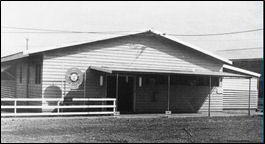
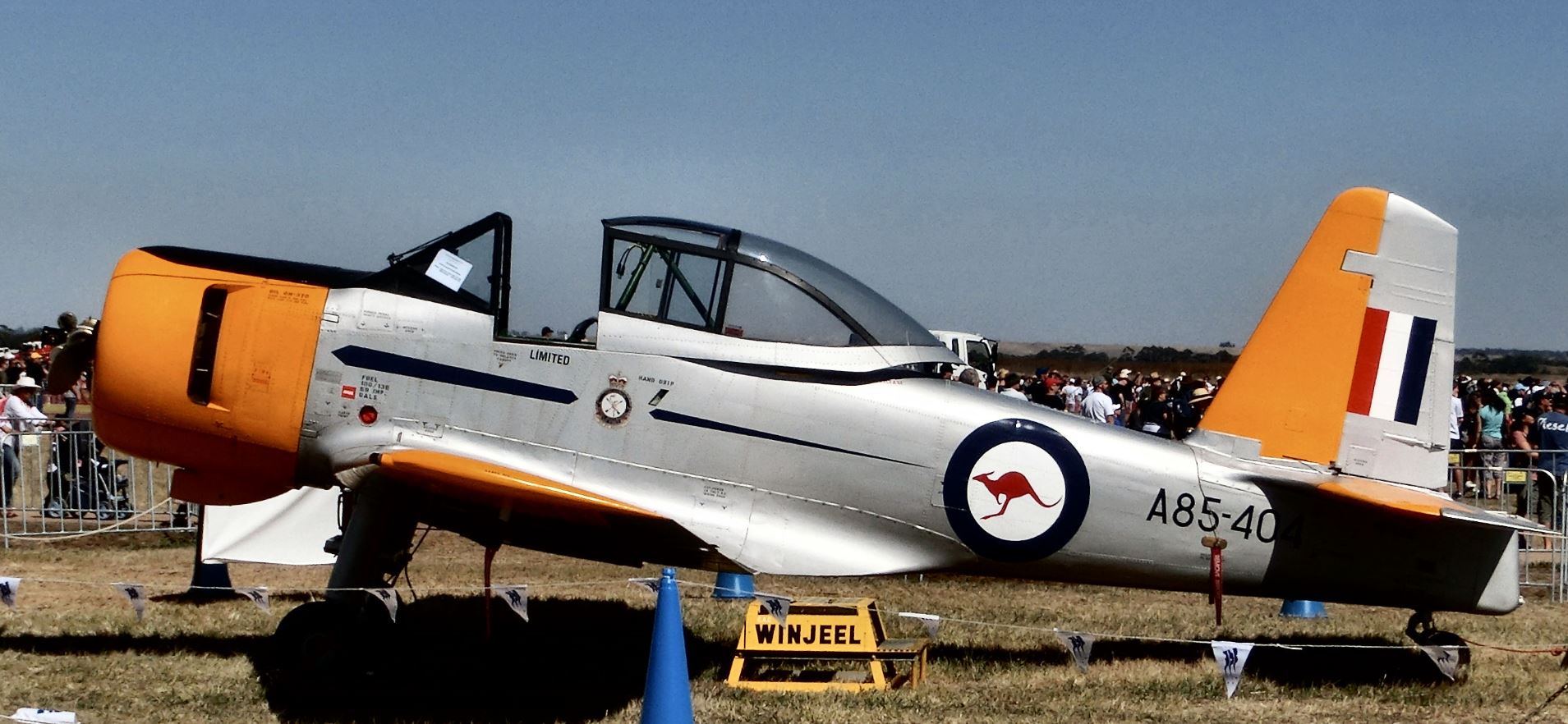
.jpg)
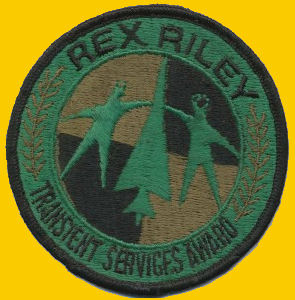
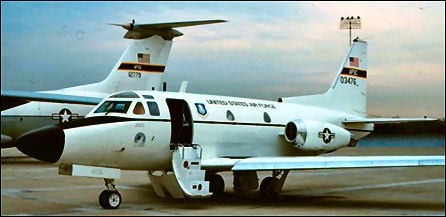
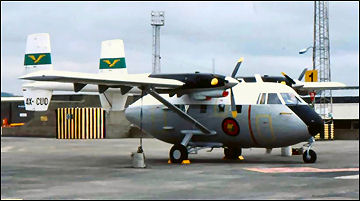 performance and load carrying. John was awarded the MBE the next year.
Was there a connection?
performance and load carrying. John was awarded the MBE the next year.
Was there a connection? Valuations
and maintenance planning. Not long into the job, he was out in the field
investigating mostly light aircraft, but everything from Airships,
gliders, Ultra Lights, Turbines, to wide bodies. Locations varied as
well, mostly in Queensland but also in New Guinea, Solomons, NT, WA,
NSW, Victoria and South Korea. There were many and varied accidents from
fuel starvation to mid-
Valuations
and maintenance planning. Not long into the job, he was out in the field
investigating mostly light aircraft, but everything from Airships,
gliders, Ultra Lights, Turbines, to wide bodies. Locations varied as
well, mostly in Queensland but also in New Guinea, Solomons, NT, WA,
NSW, Victoria and South Korea. There were many and varied accidents from
fuel starvation to mid-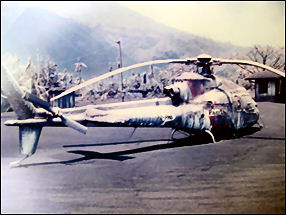
 resplendent in all
native attire and mumbled, “No gut. No gut.” The local pointed out that
the aircraft had made a straight in approach, he didn’t overfly and
check the surface wind and as the local said, “Nobody would land to the
North West at this time of the year”. David and John both looked
incredulous with that comment and the local offered the fact that he was
an off duty weather forecaster from Moresby.
resplendent in all
native attire and mumbled, “No gut. No gut.” The local pointed out that
the aircraft had made a straight in approach, he didn’t overfly and
check the surface wind and as the local said, “Nobody would land to the
North West at this time of the year”. David and John both looked
incredulous with that comment and the local offered the fact that he was
an off duty weather forecaster from Moresby.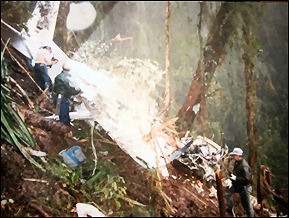 afternoon in a non-turbo charged Cessna 206 with 5
adult males on board with build ups on the ranges was not a position
that John was overly excited about. Finally landing at Mount Hagen, the
sky was dark, and so too were all on board. John often found aircraft
accident sites where he would expect fatalities and yet there were no
injuries, sometimes too he saw accidents where the folk should not have
died. When your time is up.
afternoon in a non-turbo charged Cessna 206 with 5
adult males on board with build ups on the ranges was not a position
that John was overly excited about. Finally landing at Mount Hagen, the
sky was dark, and so too were all on board. John often found aircraft
accident sites where he would expect fatalities and yet there were no
injuries, sometimes too he saw accidents where the folk should not have
died. When your time is up.